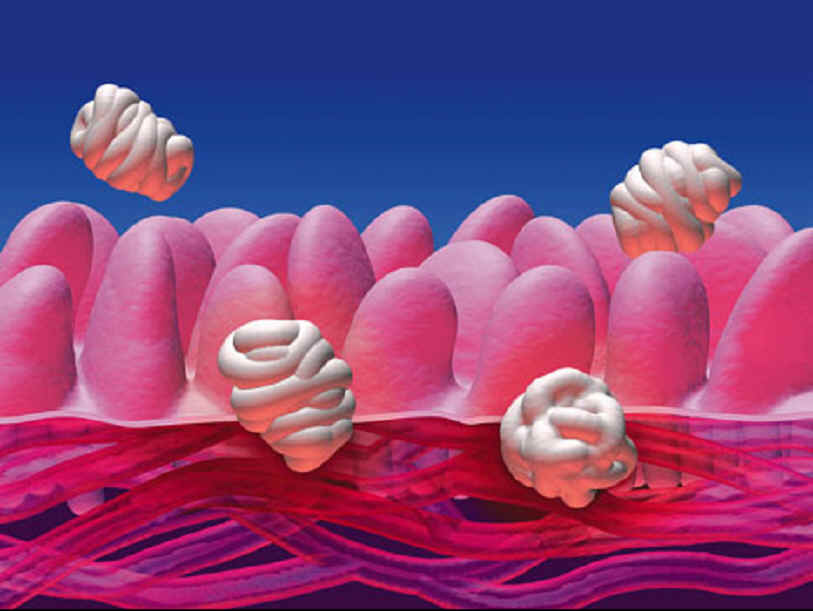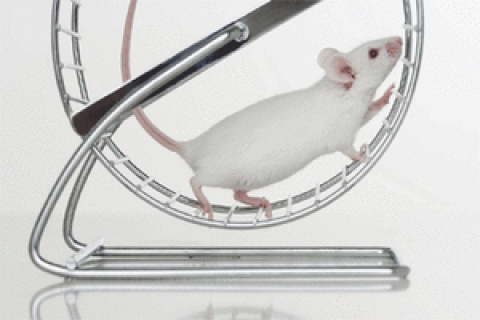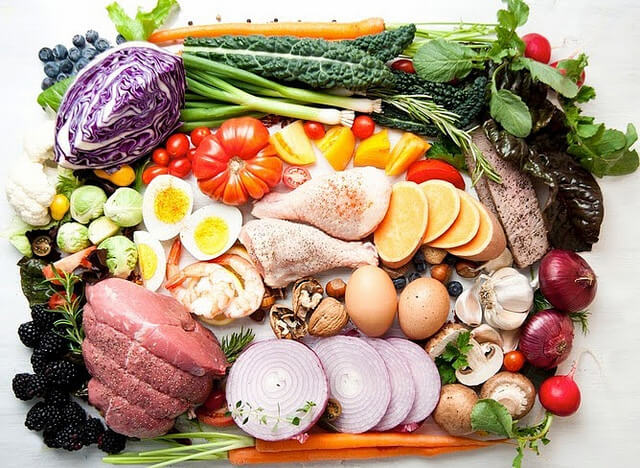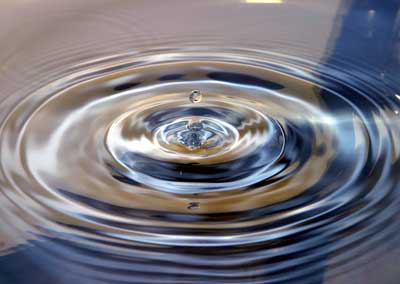The Art & Science Of APPRECIATION How To Increase The Quality & Rate of Success! By WellnessWiz Jack Tips

organization, an art object, your country, your religion or religious teaching, a charitable
work. Can you feel the upliftment in your heart right there in the center of your chest? Do
you sense a bright acuity somewhere between your ears? Do you notice that you actually feel
lighter when you appreciate something or someone appreciates you? If you’ve truly connected
with something you appreciate you may notice that a slight smile has lifted the corners of your
mouth. In appreciation, people’s bodies actually change to a more self-confident and graceful
posture.
face it: some of us need more practice. Of course I’m speaking to the man in the mirror. I must
admit that I write discourses such as this to get my own act together, to more fully embrace
the tenets of an ideal life. So pursuant to that, may I please mention how much I appreciate
you. Why? Because you are engaging these thoughts and feelings with me and truly, I
appreciate your kind attention.
and excellence.
morning, I turn my thoughts to appreciating something – often the people I know I’ll
encounter or something written. It’s a great way to start the day. Not just with an inspirational
thought, but with the appreciation of that thought or person. We can take an inspirational
thought and consciously apply it to ourselves—thus taking like one might acquire figurines or
the mantle—but we can also appreciate the thought and move to share it—thus giving like one
might reach into the wallet to help others.
automatically, by default, become happier and more fulfilled. They compound their happiness
in joy and the healthy emanations that radiate from the heart with sunrays. Appreciation is an
unlimited state of expansion that automatically brings the dividend of an inner joy that attracts
other people and situations that inherently desire more joy. Like attracts like. Appreciation is
self-enhancing and an expression of “economy in motion” in that a little appreciation often
comes back many fold. To emphasize applications of this point:
company; then we are likely to share the good news with others and the value of that
product and company increases—intrinsically and often financially. People often appreciate
a salesperson who genuinely admires the product and company they represent as opposed
to someone just trying to make a quick buck. Appreciation is reflective of integrity and
when encountered, the only caveat emptor is if the person has genuine appreciation or a
mocked up appreciation tantamount to a wolf in sheep’s clothing. [This year, wool is the
fashion.]
➢ In the Health Sphere, when you appreciates the wonders of your body’s innate life
processes, e.g. the freedom it provides you, then you are more likely to nourish it with
health-promoting foods and supplements, exercise, and get proper rest. Thus every moment
of life is enhanced. Appreciate the basic truth that the body can heal itself if/when the
cause of symptoms is corrected.
➢ In the Relationship Sphere, appreciation of other people’s strengths and contributions
enhances their self-image and value, elicits more and greater accomplishments, and
increases the depth of the relationship bringing greater joy and satisfaction to both.
➢ In the Spiritual Sphere (pursuits and practices), appreciation is a fundamental act of worship
or respect for the Love Principle that uplifts all life. There really is no room for hatred,
persecution, revenge, discrimination against others in the act of receiving God’s goodwill
and the practice of disseminating it to others.
www.appleadaypress.com.
energy that positively expands a person’s scope of influence. Giving is loving and that’s a
powerful influence expressed by daring to walk life’s oft-treacherous roads with a desire to
make things better by your sojourn.
Whatever we appreciate automatically increases in value—anything! This can be a two-edged
sword—can cut both ways—for good or ill. It’s the mind’s ‘right discrimination’ e.g. loving
choice faculty that must decide what we hold in esteem. Thus each of the Five Spheres of
Influence above requires conscious decisions. Each person must decide their standards and
then make choices. This is the “art of living life.” This hugely impactful concept is not taught
in school, yet influences every moment of every day. At some time in life, a person can do well
to consider each Sphere of Influence and set their heart-felt standards of what is truly worthy
of their time, attention, and participation.
being—a state you hold in your mind and heart-center. More than an act of judging
something to be worthy, appreciation is an effervescent, pervasive attitude of adding intrinsic
value to something called “your life!” With appreciation you do not wait for something good
or lucky to befall you and then express gratitude. Instead, appreciation is an inner state of
being that actually creates the terrain for success.
language is not sloppy and does not really have two words that mean exactly the same thing—
there’s always a nuance or two. So for sake of this discourse, I’ll endeavor to differentiate the
nuances of these two words as doing so creates a deeper understanding, aka workable
cosmology, for engaging the power of appreciation in our lives.
to thoroughly know and appreciate what appreciation is and thus be able to clutch it to our
hearts and know it for all the benefits it brings. [Now don’t fall asleep here … semantics are
empowering. Case in point: With semantics you can get lucky tonight. So now that I have
your attention…]
circumstance or object. It’s an expression of happiness. It facilitates giving thanks. A sharing.
(or errant) discrimination faculty of the mind). Appreciation is a state of being. It’s being
present in a state of love and good will .
air or release a beautiful butterfly is the choice we make, and this discourse is about choosing
appreciation and expressing gratitude that is uplifting to both the receiver and giver.
adulterated with ulterior motives such as a secret desire to receive more favors in the future.
Here we are only discussing pure gratitude—an expression that takes appreciation’s inherent
(potential) energy and releases it into action (kinetic energy).
Gratitude is a muscle that must be exercised.
The more it is circulated, the more appreciation returns to the giver enriching every aspect of
life.
to let the air out of our balloon and release appreciation through acts of gratitude so Nature
can refill our balloon with more appreciation. This is called priming the pump of appreciation
and exercising our appreciation muscles.
good—an act of grace—something fortunate, or lucky happens, and gratitude or thankfulness
is expressed. This form of gratitude is a state of feeling thankful. It reflects someone’s
appreciation, recognition and experience of our inherent beauty and value.
appreciation does not convey. With gratitude, most people wait until they receive something
and then express thanks. If they fail to express the expected gratitude, then they are
considered ungrateful little wretches or ingrates. This social protocol and expectation called
“gratitude” is not what we are talking about. Here, we are defining a pure, unencumbered
movement of Élan into gratitude—a simple, spontaneous, heart-felt expression that imparts an
element of esteem and love to another person or group of people (and this includes animals,
cultures, and objects).
Gratitude is the necessary communication of appreciation that takes action and thus, like
lightening seeking its ground, it innately discharges its expression without expectation of
return. From an energy perspective, Nature, which abhors a vacuum, fills the energy equation
by increasing capacity so the giver is able to give again.
[Do you know and trust this to be true?]
Case in Point. This pump-priming principle is often seen in closets and garages. Just clean out
your closet, or make space in your garage, and soon you’ll have more stuff to fill it up again.
Or move from a 2 bedroom home to a 3 bedroom home and it does not take long before that
extra space is filled with furniture or storage.
Thus gratitude is actually a necessary expression of appreciation, and when practiced increases
the life of the giver often in unrecognizable or mysterious ways. If neglected, then there’s a
constipation or retardation in the flow of élan as seen in greedy people, narcissists, and misers.
Celebration: The Manifestation Of The Élan of Spirit
Think about your goals or a more ideal life. How would you feel if your goals and ideals were
attained? This ‘sensualization’ process of your ‘goal attained’ adds oomph to your making it so,
and often hasten results. Would you celebrate? Of course! Sensualization is using all your
senses to imbue your being with the feeling of what you desire—how it sounds, tastes, feels,
looks, smells – the very essence of a pure desire.
Coupled with appreciation is a spirit of celebration–a liberation of joy. You don’t have to wear
a party hat, throw confetti, and blow a tweedler all the time; but in the immediate now, in
your core being, you can carry the joyous spirit of celebration into the process of manifesting
your goals. That way you will have fun with the process of working to achieve your goals.
Celebration does not mean throwing an expensive party before you have the budget. Not that
kind of leap of faith. Here we’re talking about a feeling, the spirit of celebration, and the joy of
such. It’s the excitement of purpose that enthuses your thoughts.
If you choose to have joy and celebration in your work, then work becomes more fun,
enjoyable, and fulfilling. This enviable state is simply a choice you make attitudinally, not
necessarily a set of perfect circumstances you try to create in your external environment. You
can choose to have fun in your work of making your living so you can further enjoy what
money can buy and enjoy the feeling of fulfillment when you share that power to help others.
Celebration is an affirmative action based on the feeling of the goal attained, the destination
reached or milestone passed, the race won, and the victory grasped. It’s the chariot ride
through the ancient streets of Rome to the adoring throngs. The fastest way to manifest your
goal is to hold in your heart and thoughts the knowingness that the goal is attained right now.
So celebrate attitudinally AS IF the goal already were present in your life. The more you
believe that, the more IT IS. The more you posture a person who is financially independent,
the more you create the environment for your own financial independence. The more you
assume the position of dwelling in terrific relationships, the more you attract those exact
relationships.
So, “Party on, Garth. Party on, Wayne.” The spirit of celebration imbued in your awareness
sets the tone for the complete sensualization of your success-experience.
This is a break in tradition from the dogma of the puritanical work ethic that makes people
“hoe a tough row” and suffer in their labors in order to earn a celebration when the harvest is
done. Instead, live in a perpetual celebration of the total feeling (sensualization) of completion
of your goals. Then, when the goal is attained, you can really have one heckova hoedown!
Maybe even a fandango!
Thus, sage advice is to avoid the trap of postponing celebration for when the goal is reached.
It’s OK to say that, “When I earn a million dollars I’m going to take my family on a trip around
the world,” but even more empowering is to celebrate now that you are going around the
world next spring. Make it so, so it can be. Now you can fully enjoy taking the actions that
build for that experience – even if it’s putting stickers on brochures or creating a website. This
means that you will now be working your job or business in the spirit of celebration of success,
and taking the actions necessary to make it so. You are also reading the travel brochures and
mentally packing your bags!
Joy in your work is the canary in your coalmine.
If it dies, your work is out of sync with your true values.
In 1996 when I started a business venture, I stated emphatically to the new business associates,
“I don’t need or want another job, something added to my work load. This is to be a
celebration of the joy of the manifestation process (building something out of a dream) and all
the benefits it will bring to many people. As long as we enjoy the process, we will devote
ourselves to it.” The point here is with a simple shift in attitude; I was labeling the necessary
actions required for success as “fun” instead of “work.” Thus, the business venture became a
recreational activity—a time of celebration.
That’s why I do not personally respond to the expression “you can make serious money” so
popular with people promoting a financial venture. “Serious money” implies solemn, grave,
painstaking, sober, grim, unsmiling, somber, and humorless acquisition of wealth. Yuck!
Wouldn’t you much prefer to earn joyous, lighthearted, fun, carefree money—and tons of it
because Spirit never imposed a restriction upon the infinite possibilities of Life?
First make yourself a worthy steward. Appreciate the power of money and use it in gratitude.
Celebrate how money flows for your wise use. This smoothes the way for a self-fulfilling
prophecy of perpetual, unlimited pump-priming flow.
So, celebration can be the acknowledgement of our delightful ability to manifest our goals and
dreams despite all the set backs and roadblocks. Case in point: Walt Disney. Instill in your
mind and heart, your goal is already achieved. The manifestation of such a wonderful thing is
cause for celebration. Thus, celebration occurs now. It’s not an expensive party. It’s a feeling
and state of mind that ushers success to your front row.
Tres Amigos
So there are three elements that work together to build a greater and faster manifestation rate
for success: appreciation, gratitude, and celebration. Together they create additional
momentum to enhance every effort. Again, Appreciation is an inner feeling linked with joy
that adds value to life. Gratitude is an announcement of appreciation, a demonstration of it.
Celebration is the inner revelry of vivacious joy moved to expression through sharing,
compliments, worship, and triumph. [These tres amigos are congruent with the three
Attributes of Spirit discussed in the book, Passion Play, Chapter 5—expression, expansion, and
manifestation.]
Thus, appreciation, gratitude, and celebration form a triad that spins like a propeller giving
flight to our aspirations. It generates a whirling, self-enhancing power that advances our goals
in a joyous state.
When you buy a house, you want it to appreciate, or increase in value. When you open a
savings account you want it to appreciate with compound interest. When you marry or
establish a close relationship, you want an appreciative, synergistic union that is selfenhancing, more than the sum total of your two individual attributes.
[By the way, have you told your spouse, lover, companion, parents, grandparents, friends, and
children how much you appreciate them lately?] It sows seeds of good will and even changes
lives.
Add Value To Life—Increase Your Appreciation
Appreciation is a catalyst for success. Here is an exercise to increase our appreciation and thus increase both the rate and quality of success. This is important because it helps us prepare for success as well as helps protect us from discouragement.
Take Action Now. Once we choose a topic to appreciate, we can create a list of all the things
we appreciate about it. This is actually a Relationship Sphere exercise because it defines our relationship with our other spheres of influence—Charity, Health, Spiritual Adventures, and
Wealth. In the Wealth Sphere, this list might be about all the things we appreciate about our
work, employment, or a business venture. In the Relationships Sphere, we might include
spouses or children or parents. Some people can benefit from an appreciation list about
themselves, which is similar to the “Write Your Epitaph” exercise in Passion Play’s Chapter14.
As we identify elements of appreciation, we will add value to that relationship.
Appreciation is the key that opens our hearts
to accept more of what we truly are – success in all five spheres of influence — Charity, Health,
Spiritual Adventures, Wealth, and Relationships.
For just one example, imagine a father who has a list of appreciation about his child.
Imagine how focusing on that appreciation will encourage his child to manifest more of those
attributes and minimize elements that are incongruent with those same attributes. Hmmm.
Perhaps this is a whole new way of relating to children. Instead of the typical parents’ lists of
criticisms, standards the child isn’t living up to, and all the things that need changing—it’s a
list of appreciation that causes those wonderful and developing attributes to flourish even
more.
A good list will not be accomplished in one sitting simply because no one is consciously aware,
at any one moment, of all the attributes to appreciate. Like looking at a rose from different
angles and seeing different virtues, appreciation can grow and multiply. So dedicate at least a
week’s time to assemble your list. At the end of a week we will have 90% of the attributes.
Later, other attributes will pop up spontaneously as we experience more involvement, and we
can add them to our list. Even more exciting as we practice appreciation, we awaken other
noble attributes in the objects of our appreciation.
Appreciation Is Sunshine To A Rose Garden.
There is a greater potential inside everyone
and it only blooms in the light of our smiles and approbation.
Once we have written down a thorough list of what we appreciate about something, post it
somewhere so we will encounter it—on your closet wall or on the bathroom mirror. Type the
list, write it in calligraphy, put it on a scroll, make a poster. If it’s too private, we can put it
where only we can read it in the morning. If it’s a work or business list, put it on the wall of
your office, if appropriate. This is the world we wish to dwell in, in that relationship, so sky’s
the limit!
My stepdaughter, Jessica, wrote a Mother’s Day letter of appreciation to her mother, Janine.
It’s 8.5 inches wide and 3 feet long. Janine posted on her office door. There it serves as a daily
reminder of the true value of what Jessica appreciates—unconditional love and “being here”
for her. They have a phenomenal, loving relationship.
Our lists serve to not only remind us of what we appreciate; it provides continued
reinforcement when obstacles arise. And surely we know obstacles must arise! That’s Nature’s
way. Our resolve is always tested—well, nearly always.
To this end, when the day comes that someone says a cutting remark or things don’t go as you
had hoped, you can read over your What I Appreciate list and re-connect with the celebration
of your dream fulfilled. Then you will not make a mountain out of a molehill or let a bugsplat on your windshield ruin your whole trip.
One example that occurred with me in a new business venture was that one morning I got a
phone call from someone complaining about a minute occurrence. Then the phone rang with
someone demanding his money back. Then a business partner called to tell me I wasn’t doing
something right. It was definitely a day of low biorhythms, and these molehills were becoming
mountainous. Further they were undermining my belief that the business venture was worth
all this aggravation.
So I read over my list of appreciation, which included being involved in a venture with very
smart, bold, honest, daring, innovative, ethical, dedicated entrepreneurs; a product that brings
better health to people; and that provided the freedom to stay at home and not drive the
freeways to punch a clock. Once I was re-connected to the appreciation of the venture, I was
ready to do the most important aspect of the business that day—invite people to learn about
the venture.
Without my list, I would have not been effective in inviting or sharing the information
because my subconscious mind would be wrestling with the detriments rather than the
benefits. By not allowing petty circumstances to bring me down, I was able to keep my focus
on the goal and all the good it brings. Thus the What I Appreciate list is an instant attitude
adjustment with as much impact as the smack of a two-by-four between the eyes, but with a
lot less wear and tear.
As an adjunctive exercise, we can create an appreciation list for the key elements in each of
the five Spheres of Influence cited earlier. We don’t have to do it all in one day. Take an easy
one first—one where you already have a lot of appreciation such as a charity or business
venture we are excited about, a spouse, friend, lover, or family member. This will get us going
and we’ll soon see the benefits. This also helps identify ‘weak spheres,’ areas in our lives that
require some attention and mastery because inevitably, we’ll find that they have short lists.
Next, take a tough one—one where we don’t have much appreciation such as a boss, a job, an
ex-spouse, or someone who offended you such as a spouse, friend, lover, or family member.
(Funny how the ones we care about the most can fall in both categories. But this exercise
changes that quickly.)
Do this until you have many lists encompassing key elements of all five Spheres of Influence.
As you dwell in appreciation, many people report that they open new doors to unexpected
blessings. So use this format and make your list.
WHAT I APPRECIATE ABOUT ____________________(name the person or relationship.)
1.
2. Etc.
It is not uncommon for your list to include as many as 25 points and many will have 50 or
more. The goal of listing is to get everything you can honestly write down. Later you can edit
it for redundancies or delete elements you don’t truly believe but were trying to force onto the
list. As in all things, be completely honest in your list of appreciation.
Follow Through
By making a list about something, it shows that we care and desire it to grow and be all it can
be. Now for the inevitable next step. We must communicate our appreciation. These
thoughts and heart-felt beliefs must not be held static, but must flow out. So we endeavor to
express our appreciation with acts of gratitude and celebration. One of my favorites is to
spontaneously send some a gift—a book that I read and enjoyed, a card, a note, a postcard, a
poem, a frivolous object—whatever pops up.
This does not mean we need to sit a person down and read them our list because this would
be embarrassing and imply that a response is expected. As we become familiar with our lists,
we automatically and naturally find opportunity to express a point now and then. Oftentimes
a simple “thank you” is all it takes.
Dwelling in genuine appreciation opens countless doors in life. It is a secret of success—a
competitive edge—and a magic power to both attaining your goals and living a life of wonder.
Best wishes in all your uplifting endeavors.
WellnessWiz Jack
Passion Play is the art and science of living the life of your dreams.
Passion Play applies an ancient Native American reflection method (the Mirror Technique®) with an enhanced mental
imaging process (Sensualization) to create goals and dreams that are truly congruent with who we, as a unique and
individual expression of Life, really are.
Appreciation, a discourse based on the book, PASSION PLAY by WellnessWiz Jack Tips ©2001, 2018 Apple-ADay Press www.appleadaypress.com
- • -
Passion Play provides the most powerful yet simple formula to effectively impress your subconscious mind to move
heaven and earth to manifest the life of your dreams.
- • -
Passion Play’s unique method of refining living verses awakens your creative strengths of belief, commitment and
resolve to help you mold, shape, and author a life of wonder.
- • -
The Mirror Technique is an effective and thoughtful way to communicate your heart’s desires to your subconscious
mind and there apply the mathematical formula of manifestation to make it so in your life.
- • -
Sensualization is a method to create a new matrix for your subconscious mind to fill. It awakens, enlivens and focuses
your subconscious mind so you become aligned with your true purpose and in that state of knowing find grace, ease,
growth, and success in your life endeavors.
- • -
Combining the Mirror Technique with Sensualization, Passion Play helps you create living verses of who you really
are which is inevitably more than the slice of life you are experiencing right now. Your verses are quickened with all
six of your senses—vision, hearing, taste, smell, touch, and heart-knowing—to create a multi-dimensional, vital
holograph for Life to fill.
- • -
Passion Play is a step-by-step process that takes you far beyond the practice of affirmations, hoping, and wishful
thinking into the dynamic realm of active participation in the inherent processes of Life -- expression, expansion, and
manifestation.
- • -
Passion Play will help you overcome known, unknown, and inherent self-limiting beliefs. It can help you open a new
door to a life of success and abundance. Now, if and when you are ready, you can harness your passion and begin a
new play.
1. Holt-Lunstad, Julianne; et al. "Social Relationships and Mortality Risk: A Meta-analytic Review." PLoS Medicine. 27
July 2010. Accessed 6 November 2016. http://journals.plos.org/plosmedicine/article?id=10.1371/journal.pmed.1000316.
2. Mills, Paul J.; et al. "The Role of Gratitude in Spiritual Well-being in Asymptomatic Heart Failure Patients." Spiritual
Clinical Practice. March 2015. Accessed 7 November 2016. https://www.ncbi.nlm.nih.gov/pmc/articles/PMC4507265/.








